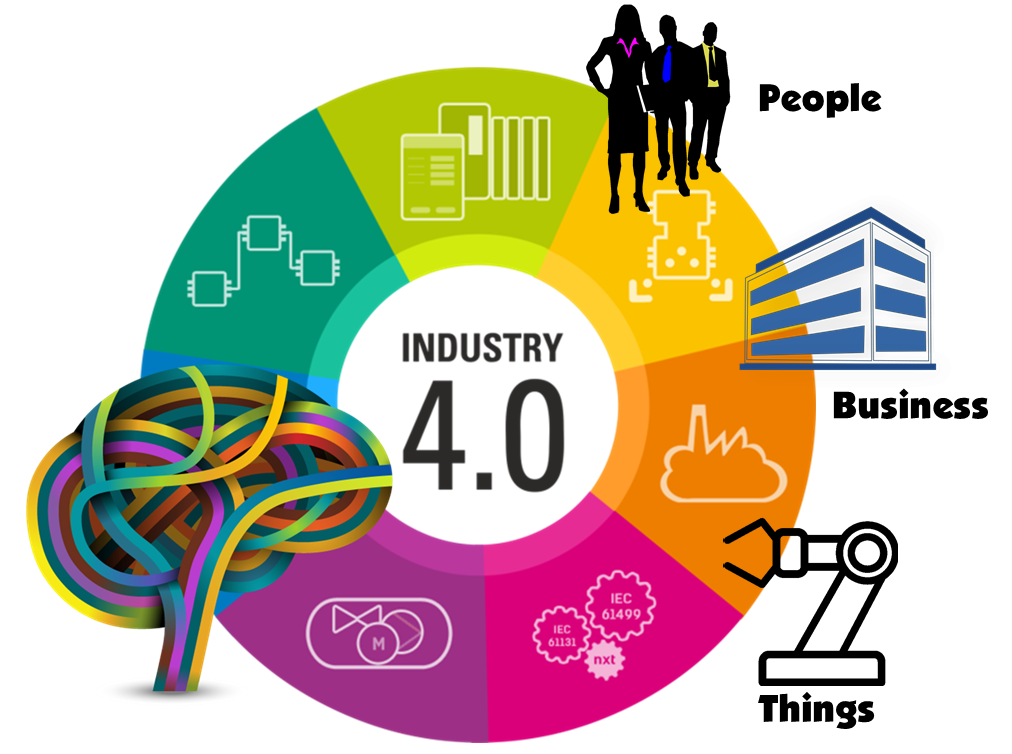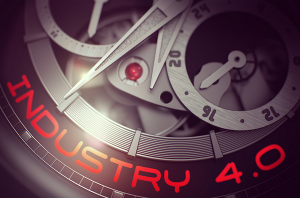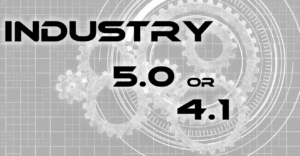Revolutions, especially those that succeed, are generally big deals. The Fourth Industrial Revolution (aka Industry 4.0) is no different. According to a manifesto from the World Economic Forum (WEF), “The Fourth Industrial Revolution represents a fundamental change in the way we live, work, and relate to one another. It is a new chapter in human development, enabled by extraordinary technology advances commensurate with those of the first, second, and third industrial revolutions. These advances are merging the physical, digital and biological worlds in ways that create both huge promise and potential peril. The speed, breadth and depth of this revolution is forcing us to rethink how countries develop, how organizations create value and even what it means to be human. The Fourth Industrial Revolution is about more than just technology-driven change; it is an opportunity to help everyone, including leaders, policy-makers and people from all income groups and nations, to harness converging technologies in order to create an inclusive, human-centered future. The real opportunity is to look beyond technology, and ways to give the greatest number of people the ability to positively impact their families, organizations and communities.”[1]
As of now, the vision and hopes expressed in that manifesto are aspirational. Many manufacturers continue to wrestle with challenges they confront when trying to transform from Industrial Age organizations into Information Age digital enterprises. Process improvement and process control expert Arno Koch wonders if some of the confusion about and reluctance to join Industry 4.0 stems from the fact that what the term means is not crystal clear. He asks, “Does everyone have the same idea about the definition of Industry 4.0 and how far are we now really in this process? And what is 4.0 really about?”[2]
The Basics of Industry 4.0
Koch believes Industry 4.0 is built on two pillars: “1. Each product has a digital twin, where all aspects of the product and the production process would be accurately defined; and, 2. The product, based on its digital twin information, knows where to go to receive what treatment.” Although digital twin technology can be powerful, most articles about Industry 4.0 focus on the convergence of numerous technologies. Bernardo M. Villegas, Professor Emeritus at the University of Asia and the Pacific and a Visiting Professor at the IESE Business School in Barcelona, explains, “Today there is a lot of excitement about the fourth industrial revolution. Also referred to as the age of digitalization, this phase of the industrial revolution is changing the way we connect and exchange information. Powered by information, communication technologies and use of cyber-physical systems, it has introduced the concept of connected devices (the Internet of Things or IoT), cloud computing, additive manufacturing, robotics, augmented reality, smart factories, data analytics, and artificial intelligence technologies to further automate the processes.”[3] Villegas didn’t even mention digital twin technology; which underscores the fact that defining Industry 4.0 using specific technologies may prove counterproductive.
A true revolution affects all aspects of an enterprise: people, processes, and technology. Most articles about Industry 4.0 focus on technology, then processes, and rarely are people mentioned — except to lament the lack of skilled labor to fill available job openings. In a separate article, Koch asks a couple of great questions, “Should man become an extension of technology? Or, should technology become an extension of man?”[4] He believes Industry 3.0 movers and shakers ensured “humans” and their “problem-solving abilities” were always kept in mind and used optimally. He adds, “The inventors of 4.0 seem to have very little faith in this: on the contrary, they assume that you have to remove the human factor from the daily process, leave the design of the systems to highly educated specialists and automate and centrally control everything.” I believe that view is a bit skewed. Many Industry 4.0 proponents believe the cognitive technologies at the heart of Industry 4.0 should be referred to as “augmented intelligence,” because their primary purpose is to help humans do their jobs better as well as help them make better decisions.
On the process front, cognitive technologies (or front runners, like Robotic Process Automation), are helping make processes more efficient and effective. The search for more efficient processes has focused companies on the importance of ensuring processes are good from the start. Bill Gates (@BillGates) once noted, “The first rule of any technology used in a business is that automation applied to an efficient operation will magnify the efficiency. The second is that automation applied to an inefficient operation will magnify the inefficiency.” Koch notes that “completely reliable” processes are essential for Industry 4.0 operations.[5] His list of foundational conditions include: Completely reliable machines that can be changed over very quickly; completely reliable production processes; completely reliable internal processes; a completely reliable supply chain; and, the ability of everything to communicate with everything.
Gaining a Competitive Edge
Business now moves at the speed of computers. Companies that make better decisions faster than their competition can gain a significant competitive advantage. Tech writer Michelle Knight (@Michell24332586) asks, “What if a cyber-physical world — fueled by data — shortened production and manufacturing decisions to the time it takes to adjust a thermostat’s temperature?”[6] She says recent studies have indicated that is exactly what Industry 4.0 technologies can help manufacturers achieve. She writes, “This just begins to describe Industry 4.0. According to a recent McKinsey article, Industry 4.0 ‘expects to deliver between $1.2 and $3.7 trillion in value.'” If faster computing and decision-making is at the heart of Industry 4.0, Knight asks, “Why talk about Industry 4.0 instead of advancements in Information Technology, Industry 3.0?” Good question. The answer is that faster and more intelligent computing (aka artificial intelligence) is only one of the technologies converging to create the Industry 4.0 revolution. Knight explains:
“Companies have better access to data and processing capabilities. Sensors on the Internet of Things (IoT) means that data can be tracked in every step of product creation, manufacturing, and delivery. Through cloud computing, data can be stored, processed, and queried from almost anywhere. Smartphones allow managers to view this information from the factory floor. Machine learning intelligently automates tasks, such as identifying and correcting a product flaw in mid-production. Digital twins — prototypes of products and services — highlight both process efficiencies and potential points of failure before a company spends too much time and money on it. Data assets form the core optimizing processes, quality, and transaction flow, ideally on the fly.”
If your company has yet to join the Industry 4.0 revolution, time to do so may be running out. Eskander Yavar, national leader of the manufacturing practice of BDO, reports that companies born digital, or that have successfully transformed into digital enterprises, are now so mature they are beginning a new metamorphosis into the next stage of Industry 4.0. He explains, “As Industry 4.0 has transformed manufacturing, a new kind of participant has emerged, the ‘reborn in digital’ company. These are manufacturers that were forged during the digital age (within the past 10 to 15 years), and built their companies with Industry 4.0 tools and technologies embedded throughout their operations. Or they were legacy manufacturers who quickly embraced Industry 4.0 techniques. Digital manufacturers not only have the technology to improve efficiencies, but they’ve also reimagined their business models, including pursuing direct-to-consumer sales, social media advertising, e-commerce, subscription models, customer portals and mobile apps.”[7]
Yavar warns, “Legacy manufacturers will need to ramp up their Industry 4.0 capabilities in order to remain competitive and take full advantage of economic recovery.” Although he believes manufacturers don’t have much time to transform, he writes, “All hope is not lost. Legacy companies have decades of industry experience and long-term client relationships on which to rely to kickstart their Industry 4.0 transformation. Implementing machine learning and analytics, for example, optimizes delivery routes and speeds up customer orders. Sensors and IoT can detect if equipment is at risk of failure, helping to avoid production delays. … No matter their level of Industry 4.0 maturity, it’s not too late for legacy manufacturers to transform into digital companies. By committing to investments in Industry 4.0, including revamping the tech stack and working toward improving the customer experience and business processes, they’ll able to compete with their digital peers for the long term.”
The dustbin of history is filled with companies that failed to adapt to changing times. And times couldn’t be changing faster than they are today. Is Industry 4.0 a big deal? You be the judge.
Footnotes
[1] Staff, “Fourth Industrial Revolution,” World Economic Forum.
[2] Arno Koch, “Why ‘4.0’ Is Often 3.0, and Smart Is Not Always Intelligent,” IndustryWeek, 22 June 2021.
[3] Bernardo M. Villegas, “Understanding the Four Industrial Revolutions: Part Four,” BusinessWorld, 10 August 2021.
[4] Arno Koch, “Should Talent Be an Extension of Technology, or Vice Versa?,” IndustryWeek, 22 June 2021.
[5] Arno Koch, “What Conditions Make Industry 4.0 Feasible?” IndustryWeek, 15 July 2021.
[6] Michelle Knight, “Industry 4.0: Make Data-Driven Decisions Immediately,” Dataversity, 31 August 2021.
[7] Eskander Yavar, “Why ‘Reborn in Digital’ Manufacturers Will Outpace the Competition,” SupplyChainBrain, 14 September 2021.





